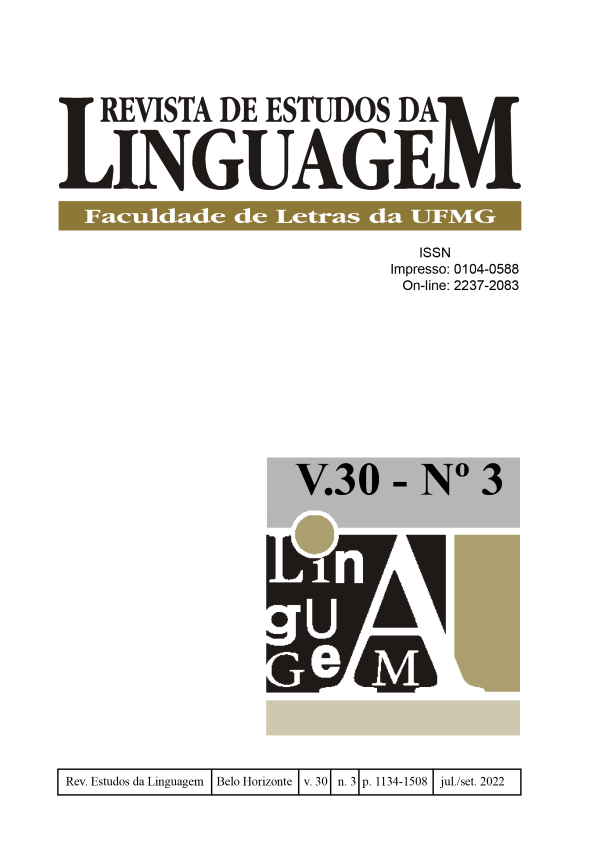A formação da família de construções aspectuais finais na história do português
conexões entre redes multiformes
DOI:
https://doi.org/10.17851/2237-2083.30.3.1206-1237Palavras-chave:
família construcional, aspecto final, diacroniaResumo
Assumindo-se as premissas teórico-metodológicas da abordagem construcional, que define a língua como sistema adaptativo complexo e organizada em redes de construções, as quais, ligadas via elos verticais e horizontais, se unem por traços de forma e de significado, constituindo famílias (BYBEE, 2016; DIESSEL, 2019; GOLDBERG 1995; 2006; 2019; SOMMERER, 2020; TRAUGOTT; TROUSDALE, 2021; inter alia); investiga-se, neste trabalho, em perspectiva diacrônica, a gênese e o desenvolvimento da família construcional de aspecto final no português, a partir do estudo de três microconstruções: [deixar+de+Vinf.], [parar+de+Vinf.] e [largar+de+Vinf.]. Para tanto, empregam-se os métodos quantitativo e qualitativo na análise de dados recolhidos do Corpus do Português (DAVIES; FERREIRA, 2006; 2016) entre os séculos XIII e XXI; ademais, a fim de averiguar a extensibilidade dos pareamentos nas redes, arrola-se, como parâmetro, a apuração dos tipos semântico-pragmáticos de verbos sancionados no slot de Vinf. . Os resultados obtidos atestam que a formação do grupo aspectual final tem origem na família transitiva, cuja semântica denota o afastamento entre os participantes da predicação. Membro dessa família, a microconstrução conteudística com deixar tem seu slot de objeto neoanalisado, promovendo a emergência do pareamento [deixar+de+Vinf.], que, pelo mecanismo de ativação expandida, se torna membro da família aspectual na rede auxiliar. Posteriormente, surgem, via analogização, as microconstruções [parar+de+Vinf.] e [largar+de+Vinf.], que, compartilhando similaridades, também se consolidam nesse agrupamento procedural. Portanto, esta investigação ratifica a importância de se aliar trajetórias diacrônicas e processos cognitivos na explicação de como redes multiformes se conectam e promovem a (re) configuração de famílias construcionais.





